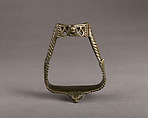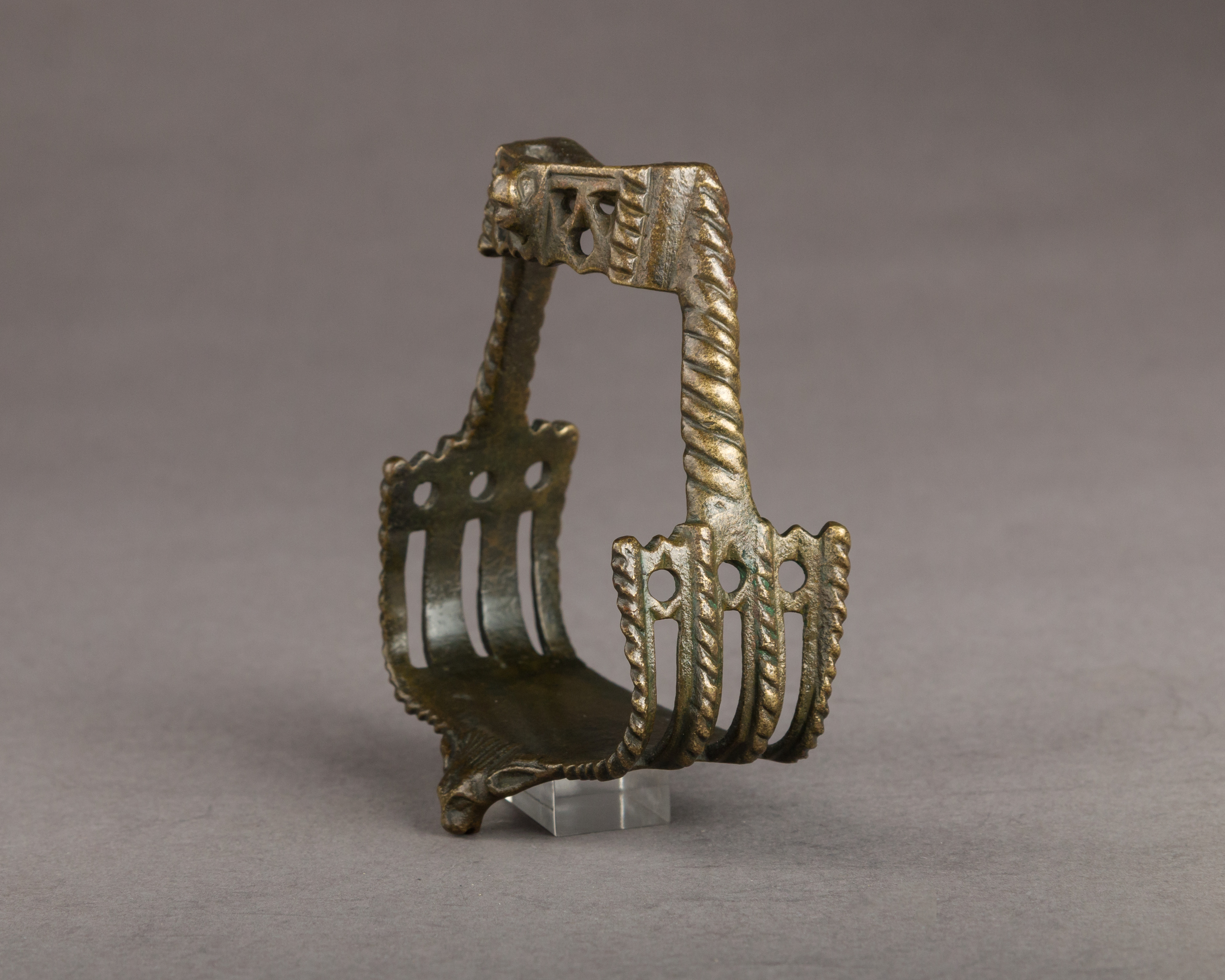Stirrup for a Child
Some decorative features of this stirrup, like the pierced ‘window’ motif on the sides, are typically Bohemian, but were also sometimes adopted by surrounding regions like eastern Germany. This stirrup reproduces in bronze more common examples made of twisted and pierced iron. The animal heads at the front are more unusual, and take advantage of the greater malleability of this material.
The small size of this stirrup means that it was probably made for a child. Children from wealthy families would start riding lessons as soon as they could sit on a pony, usually around the age of 3. Horsemanship was an important component of European noble society, and children of the elite were expected to master the art of equitation. Moreover, as many nobles served in the cavalry, it was essential for them to be skillful riders by the time they were old enough to go to war.
Due to rights restrictions, this image cannot be enlarged, viewed at full screen, or downloaded.
This artwork is meant to be viewed from right to left. Scroll left to view more.



